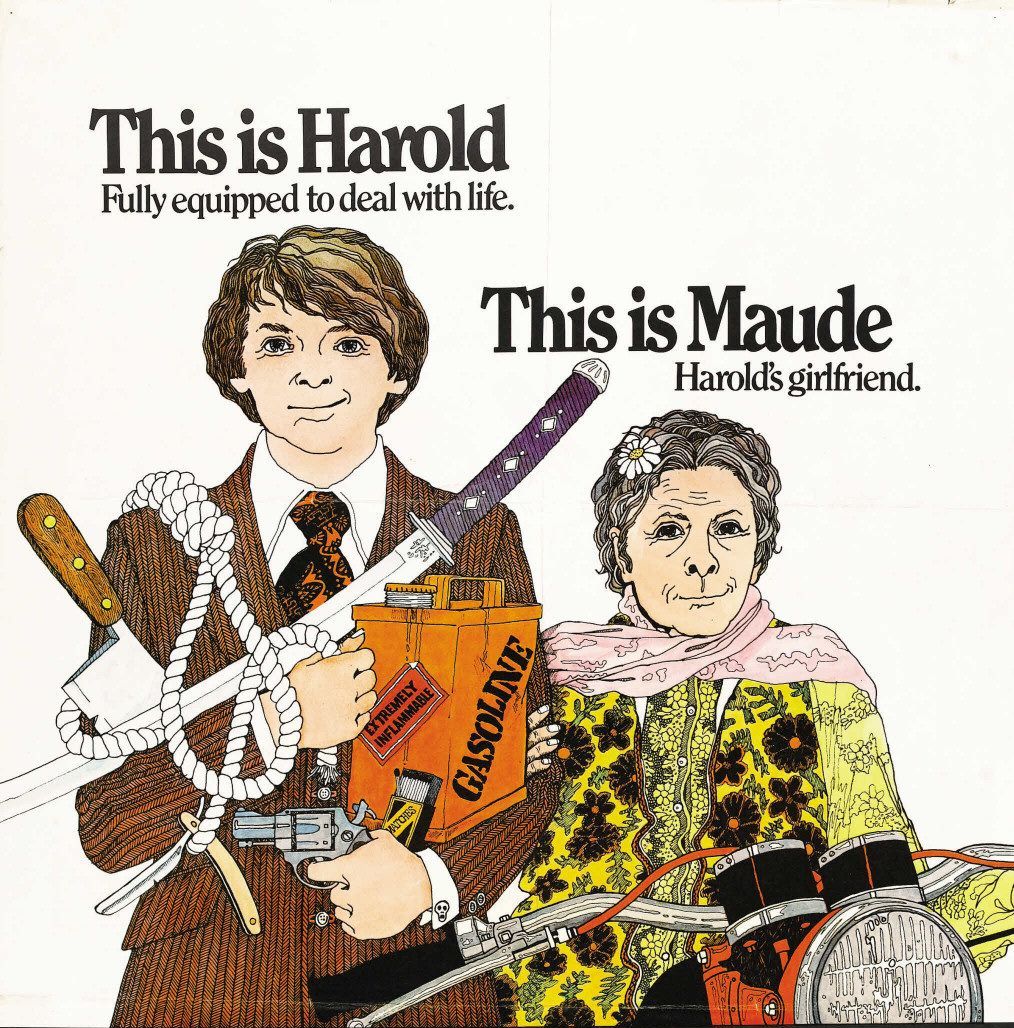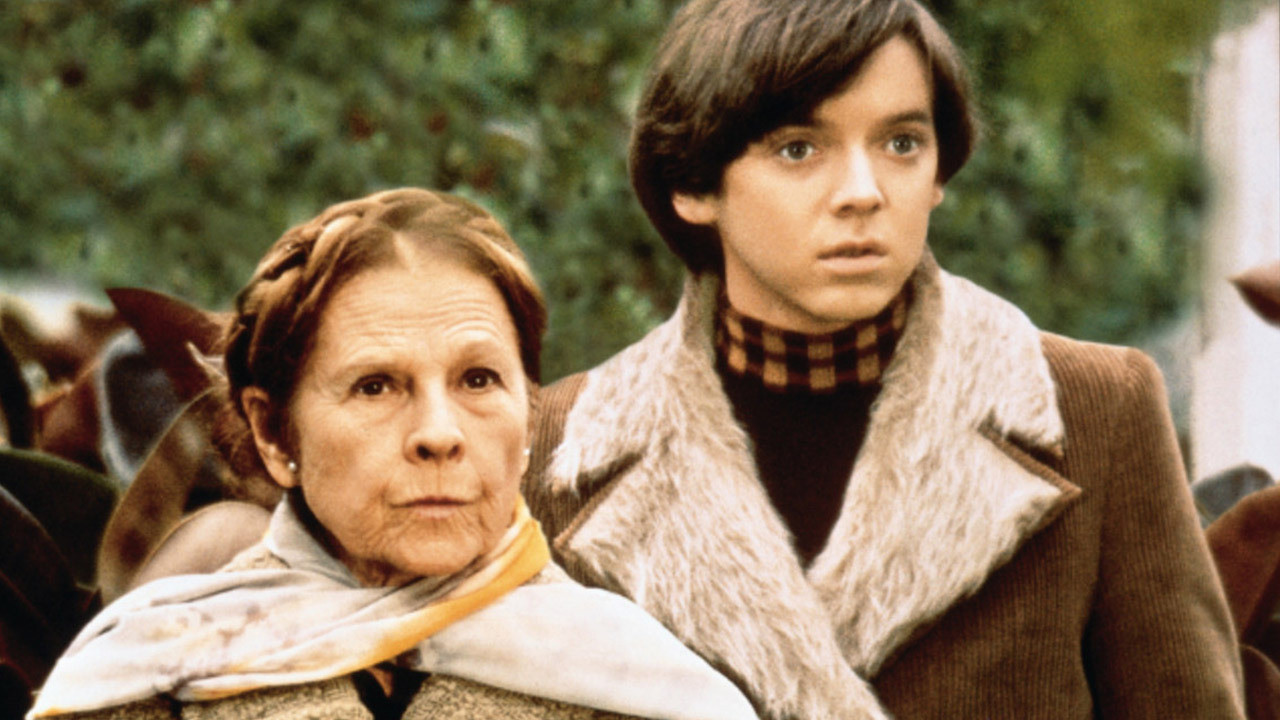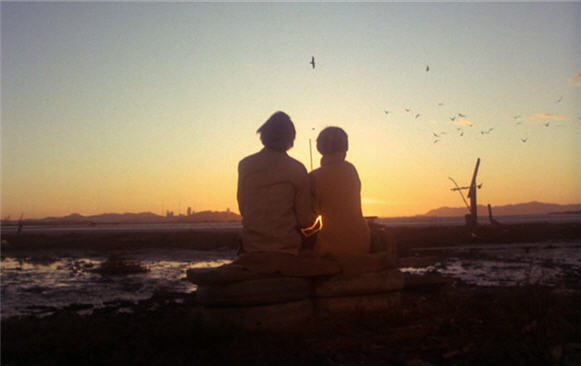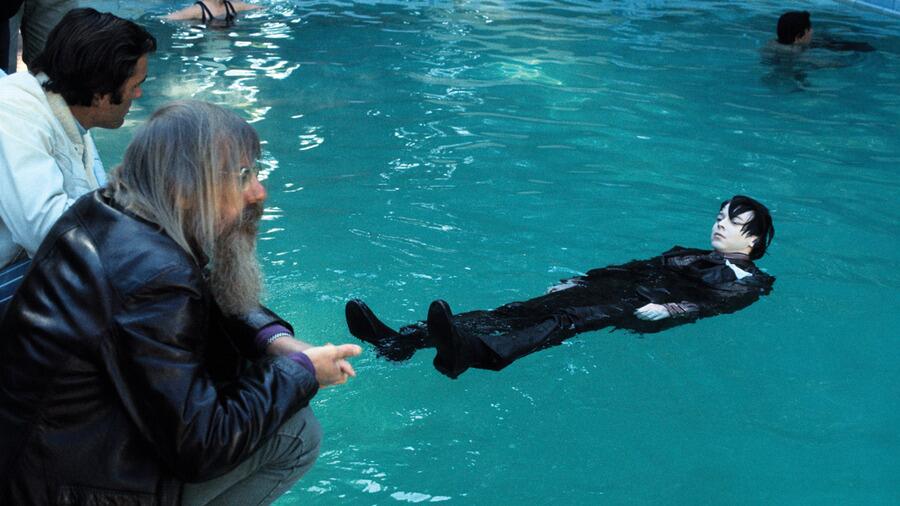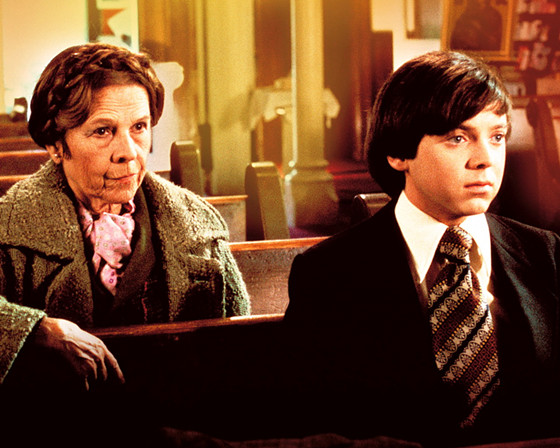Once in a while, a film comes along that affects the viewer on a deep and emotional level, while it can also leave others completely cold. The 1971 Hal Ashby film “Harold And Maude” is one of those ‘crazy diamonds’.
The original black comedy about suicide, it is, in fact, an incredibly positive, joyous and life affirming film. Described as being ‘as funny as a burning orphanage’ upon release, over the past forty-three years, it has developed a fierce cult following, and has been recently given the royal treatment of being released on The Criterion Collection.
The story concerns Harold (Bud Cort), a painfully shy young man in his early twenties obsessed with death. He is continually staging mock suicides to attempt to get the attention of his cold, unfeeling mother (Vivian Pickles). His idea of fun is going to the funerals of complete strangers. As a viewer, the emotional austerity and coldness that Harold experiences at the hands of his mother and other authority figures in his life is almost tangible. Once Maude enters his life, the film literally lights up in front of your eyes on both a physical and spiritual level! At a funeral for a complete stranger, he meets Maude (Ruth Gordon), an eccentric older lady who embraces life to the fullest no matter what others think. A life changing bond and friendship develops between the two.
One of the most striking aspects of this movie is its juxtaposition between life and death. For example, one time when the characters emerge from a funeral at a church, there is a parade making its way down the street. This thread continues throughout the film.
Considering it was released by a major studio, in this case Paramount, it is wildly eccentric and has its own unique character and flavour to it. This goes back to the brilliant script by late Australian screenwriter Colin Higgins, combined with the assured, never overbearing direction of Hal Ashby, one of the most criminally underrated directors Hollywood has ever produced. All of his films, to one degree or another, have the ‘outsider looking in’ vibe and feel to them. These include such gems as 1973’s “The Last Detail”, 1976’s “Bound For Glory”, a biopic on Woody Guthrie, and the astounding “Coming Home” from 1978. One of the first films to directly address the Vietnam War, it outstrips its more famous cousin, “The Deer Hunter”, on just about every level of filmmaking.
Another unforgettable characteristic of this utter gem of a film is the Cat Stevens song cycle that runs through it. Even to this day, “Don’t Be Shy” makes me smile like a giddy child for some reason. Great songs in their own right, they really help to make this film a remarkably vital and enriching experience. Check out the montage towards the end that uses the song “Trouble”. Without a word of a lie, you feel both the music and what is being presented visually in your bones. Try thinking of other films that have that quality to them. You could probably count them on one hand.
Another haunting quality of “Harold And Maude” is the way it depicts how people gravitate to each other and how friendships form. The two main characters remain one of the more extreme ‘odd couples’ ever committed to film. However, the relationship never feels fake or forced. They give each other so much in a world that, on the whole, doesn’t understand or ‘get’ them.
The way that the film depicts friendships and how they form is something that it does in a way that will last forever. At first, Harold is quite cautious and wary of his new ‘friend’. The scene where Maude talks about ‘the cosmic dance’ that is music and insists Harold learns to play an instrument, in this case the banjo, is one that makes the heart soar. This will come back through the course in the film, most notably in the borderline flawless final scene. This is a particular moment in cinema that pushes past provoking mere tears from its viewers. This is a moment that stirs the soul, something one rarely, if ever, experiences while watching a film.
There is a scene that goes for all of five seconds that completely changes the timbre and tone forever. We briefly see Maude’s wrist. On it is a number, illustrating her survival of the death camps during World War II. It puts into perspective the way that she has stared death in the face and refuses to let it break her. In relation to Harold, she teaches him the same. Namely, to embrace and live life, and not run from it like he always has.
The ending, where at the age of eighty, Maude chooses to take her own life, is somewhat controversial. Personally, I feel that she’s chosen to live life truly on her own terms and rules, unlike what she has experienced in the past.
While addressing some deep and serious themes and concepts, “Harold And Maude”, to its eternal credit, is never a maudlin or depressing experience. The ‘dates’ that Harold’s mother set him up on, the sequence where our odd couple steal a tree from downtown and plant it back in the wilderness and any scene involving Harold’s uncle, a military man, are absolutely priceless in their timing and black comedy.
Like a friend, this is a film that, once seen, is never forgotten. One can see its influence in modern films such as “Fight Club” and “American Beauty”. Namely, how it depicts characters who have been compromised and somewhat broken by the life that they have experienced, where they merely exist and move to the suffocating, dictatorial beat of someone’s else’s drum. Something or someone has eventually inspired them to change the ‘rules’ completely and live life on their own terms and rules, no matter what the consequences of this life/philosophy shift might entail.
Screenwriter Colin Higgins originally wanted this film to be his debut as a director, but couldn’t find the money to make it in that way. Instead, Hal Ashby got the job of directing. This was an electric example of writer and director being on the same page in regards how to bring the material to screen. Looking back, you couldn’t have made a better choice than Ashby as director. A criminally underrated director of the time, he seemed to embrace those ‘outside of society’ in his films; they were very much a kindred soul to his own perspective on life, the universe and everything.
Higgins eventually made his directorial bow with the very funny and hugely enjoyable “Foul Play” in 1978, making two other very notable comedies in the form of “Nine To Five” (1980) and “The Best Little Whorehouse In Texas” (1982), before his untimely death of AIDS in 1988.
At the absolute heart of “Harold And Maude” is the chemistry between Cort and Gordon. There is a spark and fire between these two wonderful actors that is utterly impossible to ignore. Again, like the director, another case of the two lead actors connecting to a remarkably strong degree with the material. Personally, I don’t think the film would be half of what it is without these two. There exists a whole generation of lovers of cinema who, in their own lives, lost their grandparents at an early age. As a result, their memories of them are fuzzy to non-existent. More than once, I’ve heard someone say that they wanted Ruth Gordon to be their grandmother! Such is the fierce, undying connection that some have formed with “Harold And Maude”.
The film was a complete and total flop upon its initial release. This is simply a film you either ‘get’ or you don’t. There seems to be no middle ground. It’s like the cinematic equivalent of Turkish Delight, Guinness and/or baby octopus. Namely, it’s not for everyone. In regards to it’s initial cinematic crash and burn, it somehow survived in the counter-programming world of ‘midnight movies’ or late shows. This was a completely different way of watching movies and attracting wildly different lovers of cinema than what the mainstream had to offer.
The first ‘midnight movie’ is usually identified as Alejandro Jodorowsky’s “El Topo”, from 1970. Others in this radical form of cinema programming include “Pink Flamingos” (1972), “The Rocky Horror Picture Show” (1975), “The Harder They Come” (1973) and the utterly startling “Eraserhead” (1977). A very enterprising cinema in New York, The Elgin Theatre, put sessions on at midnight. For some reason, this really struck a chord with those who chose to be ‘different’ and ‘alternative’ in their philosophy towards life.
“Harold And Maude” fit into this ethos perfectly. It ran for many years as a late show across the world. I first saw it at a late show at the dearly departed Valhalla Cinema in Melbourne, Australia. I remember walking out of the cinema in an absolute daze, stunned, shaken and deeply moved by what I had just seen. A potent lesson on choosing to be open to new experiences, whether that involves music, cinema or just about anything else in life.
Funny story. Some years later, Bud Cort provided the voice for the computer Edgar in Steve Barron’s 1984 film “Electric Dreams”. Boy George, who was huge at the time due to his work with the band Culture Club, was providing music for the film. When he met Cort on set, his first words were apparently along the lines of “So you’re the guy that kept killing himself in that film”!
Ultimately, this is one of the most positive, affecting, and joyous, life affirming films ever made. In this current climate of film making, Hollywood wouldn’t touch this with a barge pole! In cinematic terms, it truly does define the term ‘crazy diamond’.
Author Bio: Neil is a journalist, labourer, forklift and truck driver. In a previous life, he was a projectionist for ten years. He is a lifelong student of cinema.
